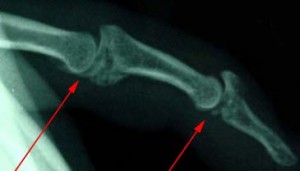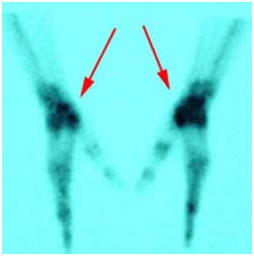Gentle Reader,
In the September 2012 issue of Consumer Reports an article consists of 10 warnings about the potential dangers of food supplements. In my last post, I quoted Dr. Steven Chaney’s refutation of the first six of those warnings. As he pointed out, “all of those warnings were true, but they pertained to such a small portion of the food supplements in the market that they were almost meaningless.”
My hope for you as a consumer, is you might be more discerning and stay away from supplements that are worthless or dangerous or both. When trying to prevent future disease and/or mediate arthritis pain, muscle soreness, osteoporosis and the effects of osteoarthritis, you want the supplements you take to do the job. The news stories can discourage you from believing you are spending your money wisely and maybe those bottles of supplements gather dust in the back corner of your kitchen cupboard.
Let’s see what Dr. Chaney has to say about this statement by the Consumer Report authors:
# 7 heart and cancer protection of food supplements is not proven.
“While it is extremely difficult to definitively prove the efficacy of food supplements, the article is written in such a way that one might be led to believe that food supplements have definitely been proven not to be affected. Nothing could be further from the truth.”
Quoting Dr. Chaney, who directs a cancer research lab at University of North Carolina at Chapel Hill, “The truth is that some experts have an anti-supplement bias. They require multiple studies before they will admit that a supplement might be beneficial. However, they accept a single study suggesting that a supplement doesn’t work or that it might be harmful as the absolute truth. These reports are picked up by the media, and after they’ve been repeated often enough they take on a life of their own. They become “urban myths”, and become generally accepted as true.
“So I would like to take a little more time and discuss some of the claims that in this section of the Consumer Reports article.
Claim #1 calcium supplements inevitably increase the risk of heart attack.
“The problem is likely one of calcium supplement design rather than a characteristic of all calcium supplements. Those calcium supplements designed solely to get calcium into the bloodstream quickly are problematic because all that excess calcium has to go somewhere – and calcification of our arteries is not a good thing.
“What you should look for is calcium supplements that are designed to maximize the incorporation of calcium into your bones. Not only is that likely to decrease the risk that the calcium ends up somewhere where it shouldn’t be, but it also increases the probability that the calcium ends up where it should be – in your bones.
Claim #2 omega-3 fatty acids don’t actually decrease the risk of heart attack or stroke. The authors of the Consumer Reports article did note that several previous studies had shown that omega-3 fatty acids decreased the risk of heart attack, but seemed to suggest that those studies were invalidated by a recent study showing no effect of omega-3 supplementation in people at high risk for heart attack and stroke.
“The problem with the most recent study was that the patients in the study were already on 3 to 5 drugs that lowered the risk of heart disease. All this study showed was that omega-3 fatty acids did not offer any incremental benefit for patients who were already maxed out on medications.
“This study was silent on the important question of whether omega-3 fatty acids by themselves might decrease the risk of heart attack and stroke. Thus, this most recent study does not invalidate the several previous studies showing a beneficial effect of omega-3 fatty acids on the risk of heart attacks and stroke.
Claim #3 antioxidant supplements might actually increase the risk of cancer, especially prostate cancer.
“That claim is based on a single, flawed meta-analysis. That study excluded any studies showing beneficial effects of antioxidants. In addition, the increased cancer risk reported in the meta-analysis was almost entirely due to a single study in which vitamin E was combined with estrogen replacement therapy – which is known to increase the risk of cancer.
“The authors of the Consumer Reports article completely ignored a second publication that reanalyzed the data and pointed out the flaws in the previous study. They also ignored a recent study showing that antioxidants significantly decreased cancer risk.
Dr. Chaney challenged the study blaming Vitamin E for increased the risk of prostate cancer, saying that it “had several flaws, and was directly contradicted by two previous studies showing that vitamin E significantly decreases the risk of prostate cancer.
“In summary, I don’t mean to suggest that studies claiming that certain supplements could do some harm are completely baseless. In fact, I have long warned that high potency, high purity individual nutrients, such as pure alpha-tocopherol or pure beta-carotene, do have the potential to cause more harm than good. That is because they can interfere with the absorption of similar nutrients that have beneficial effects themselves. I have long advocated for a holistic approach to supplementation rather than relying on individual high potency, high purity supplements.
“Based on the recent research with calcium supplements I would add the warning that supplements that are solely designed on the basis of how fast the nutrients can get to the bloodstream, without any consideration of where they go once they get into the bloodstream, also may have the potential to do more harm than good.
“As a scientist I am appalled that single studies suggesting lack of efficacy or the potential for harm are given more weight than multiple studies suggesting the benefits of supplementation. I think much more research is needed before we start to tell people to avoid antioxidant supplements or that supplements don’t really provide any benefits. If we look at the total body of published literature, the evidence for the benefits of supplementation far outweighs the evidence for risk.”
Now it’s your turn: Take action and keep this conversation going about the value of supplementation. What is your actual experience? Go to the comment section and leave me your remarks.
To shop for the most researched and proven bioavailable calcium product on the market, go here.
The same is true for Vitamin E, a supplement with all the tocopherols, balanced and enhanced with selenium and grape seed extract can be purchased here.
Stay tuned for the next blog when Dr. Chaney will make his concluding remarks in response to the Consumer Report article.
Fondly, Betsy
Be Well, Do Well and Keep Moving
BetsyBell’s Health4u
206 933 1889 1 888 283 2077
betsy@hihohealth.com

